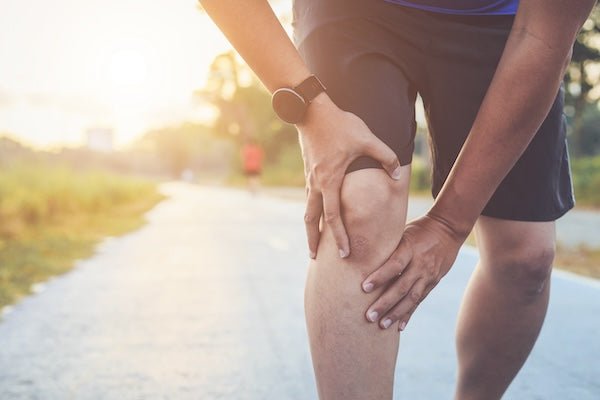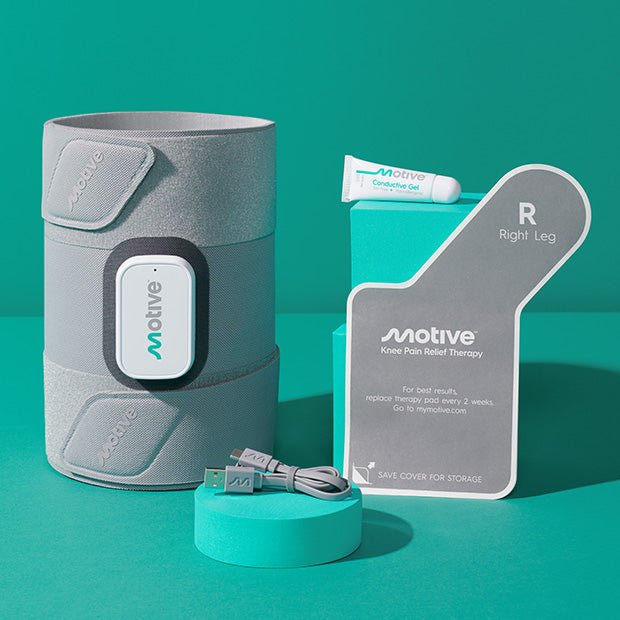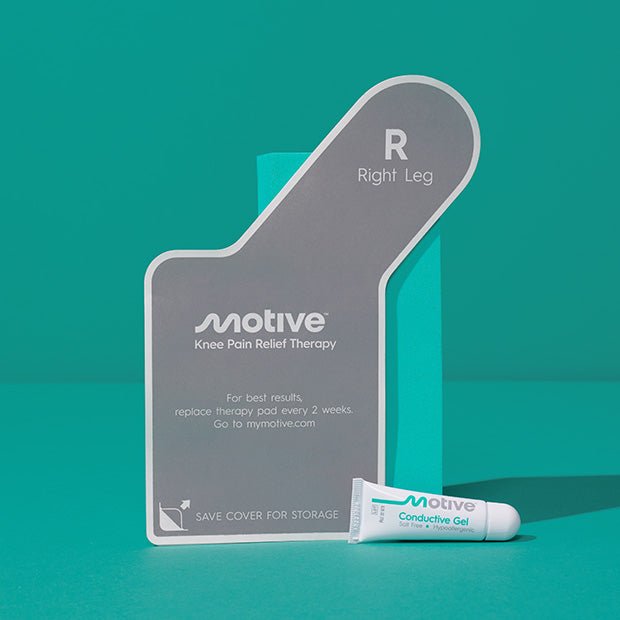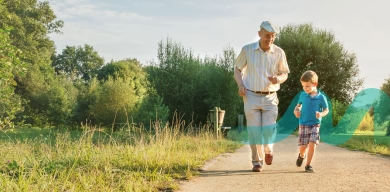
Knee pain is a common health problem observed in people of all age groups. It can occur due to knee injuries, such as torn cartilage or ligaments, kneecap dislocation, muscle imbalance, inflamed quadriceps tendons, or medical conditions such as arthritis and gout. Overuse of knee joints can also lead to severe knee pain.
The pain and irritation in and around the kneecap (or patella) is one of the most common types of knee pain observed in individuals—especially females and young adults. Medically, it's known as Patellofemoral pain syndrome (PFPS) and commonly goes by “Runner’s knee or Jumper’s knee”. It occurs mainly due to performing repetitive strenuous activities, such as jumping, cycling, or running.
Kneecap pain leads to stiffness and swelling in the affected area, making your daily activities challenging. In many cases, you may need to see an orthopedics specialist or healthcare provider for treatment options.

Figure: Knee Anatomy showing the patella and other knee components.
In this article, we will review five common causes of kneecap pain, identify specific symptoms based on the knee pain issue, and learn how Motive therapy is a proven solution for long-lasting knee pain relief.
5 Common Causes of Kneecap Pain
Kneecap pain or patella pain affects individuals of all ages; however, it’s commonly observed in adults over the age of 65. The intensity of knee pain varies based on its underlying causes, requiring accurate diagnosis through imaging tests such as X-rays and MRIs for appropriate treatment options.
1. Osteoarthritis
Osteoarthritis causes the degeneration of cartilage, resulting in unprotected bone surfaces rubbing against each other. It’s more commonly observed in people over the age of 50. Some common symptoms, due to friction between bones, include chronic pain, inflammation, stiffness, swelling, and redness in the affected area, which impacts daily activities, such as squatting, climbing stairs, and walking.
The steps of diagnosis include a physical examination followed by an X-ray or MRI of the affected area and blood tests. Though there’s no permanent cure available to treat osteoarthritis, many therapies and treatments are available to provide temporary pain relief. This includes physical therapy (such as swimming or other low-impact activities—consult a physical therapist for suitable exercises based on your knee pain condition); medications, such as acetaminophen, naproxen, and ibuprofen; knee surgeries and cortisone injections. Motive therapy is also an effective non-invasive approach to getting long-lasting pain relief from osteoarthritis pain.
2. Patellofemoral Pain Syndrome (PFPS)
PFPS causes pain around the kneecap and in front of the knee. It’s also known as runner’s knee. People experiencing this condition notice stiffness and a sensation in the knee as well as instability in the lower thighbone. You may also feel pain in front of your knee after sitting for a long period of time with bent knees.
This problem can arise when you begin intense activities that abruptly strain the knee, such as starting a vigorous workout routine involving running, squatting, or jumping. Sports medicine experts may recommend stretching or strengthening exercises, ibuprofen, shoe inserts, or cold packs based on your diagnosis.
3. Chondromalacia Patella
A condition that arises due to the damage of cartilage behind the kneecap. The softened cartilage causes mild pain around the kneecap, which gets worse when going downstairs. Doctors may recommend avoiding high-impact activities, wearing tapes and braces, and focusing on strengthening the thigh muscles (hamstring and quadriceps muscles) through targeted exercises. In severe conditions, surgery may also be recommended.
4. Patellar Tendinitis
Inflammation of the patellar tendons or quadriceps tendons can make them sensitive to touch and result in tightness, swelling, and discomfort in the knee. It’s most commonly observed in individuals who play basketball and volleyball. The knee problem is treated either with physical therapy, cortisone injections, or platelet-rich plasma (PRP) treatments.
5. Trauma and Injuries
Severe kneecap pain can occur when the kneecap is dislocated due to trauma or injury, such as falls, direct blows, or sports-related accidents. These incidents can knock the kneecap out of its original position, causing significant discomfort and limiting mobility.
Bursitis or injury in the bursa (a small, fluid-filled sac) is also one of the most common causes of kneecap pain. Although the issue may resolve on its own, providing proper care, such as applying ice packs and avoiding activities that trigger pain, is necessary to quickly alleviate the discomfort.
Experience Lasting Relief with Motive
Kneecap pain is the condition of severe pain in and around the kneecap. The problem arises either due to sports injuries or medical conditions such as arthritis. Doctors may recommend physical therapy and muscle strengthening exercises, medications, or surgeries based on the severity of your condition.
However, Motive Knee–the only FDA-cleared therapy–stands out as an effective, non-invasive approach to getting long-lasting kneecap pain relief. The therapy is specifically designed to tackle one of the root causes of knee pain by fortifying the muscles surrounding the joint.
Clinical studies have demonstrated that Motive's unique electrical stimulation therapy significantly decreases knee pain and stiffness for patients, thereby providing a scientifically-supported, safe, and effective method for managing knee pain and improving patients' quality of life.
If you are tired of persistent knee pain, discover how Motive can help you reclaim your mobility and experience pain relief. Explore Motive therapy today!”




